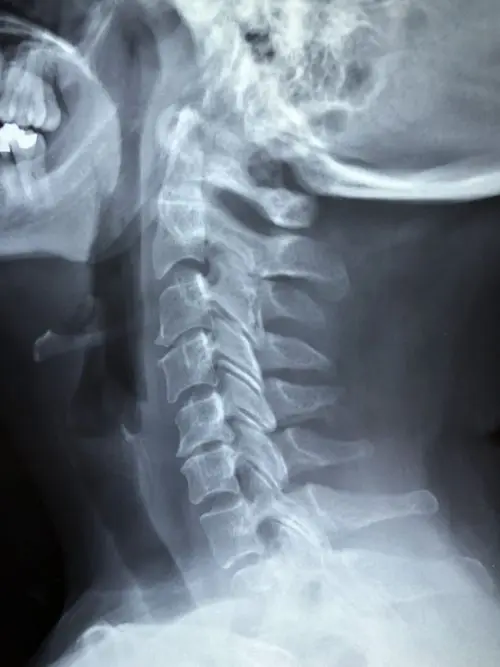Most people are actually unaware of what they should be expecting during their first chiropractic visit. No worries though, we’ve got you covered! This page will aid you in learning everything you should expect during your visit.
If you have never been to a chiropractor before, it may be something that you are nervous or concerned about. Read through this article to get more information on what to expect during your first chiropractic visit.
Summary of your First Chiropractic visit
If this is your first visit to a chiropractor or to our clinic, Dr. Royer will carry out a comprehensive examination, which includes the following:
- Detailed patient history
- Detailed physical examination
- Requisite diagnostic studies
- Final diagnosis
- Appropriate chiropractic treatment procedures for your condition
Patient History
Before the consultation on your first chiropractic visit takes place, you will be requested to complete certain forms that will provide ample background information regarding your condition and symptoms. This may include questions seeking information regarding:
- The treatments you’ve already tried and to what extent they were successful
- Whether anything specifically worsens or improves your pain
- Whether the condition/pain was the result of an accident or an injury
- Details about where the pain is located
- Details about how and when the condition/pain began
You’ll also be requested to submit your family medical history and details regarding pre-existing medical conditions, prior injuries, current and previous treatments undergone, and healthcare providers.
If needed, you can also bring copies of your latest tests (X-ray or MRI reports), laboratory results, list of medications you’re currently taking, including OTC medication, naturopathic and homeopathic substances, teas, herbs, vitamins, and nutritional supplements.
To fully understand your condition and design an appropriate treatment plan, your chiropractor will also need to know whether you have any of these issues:
- Joint disorders like arthritis
- Injuries like disc injuries, muscle strains/sprains, and bone fractures
- Nausea
- Heart conditions like hypertension
- Blurred vision or dizziness
- Circulatory issues
- Current health conditions for which you’re undergoing treatment at the moment
- Implants such as cosmetic implants, artificial joints, pacemakers, etc.
- Bone disorders like osteoporosis
Chiropractic Physical Exam
Dr. Royer will then carry out a comprehensive physical examination next for a proper evaluation of your condition to come up with an accurate working diagnosis on your first chiropractic visit.
Apart from general physical exam procedures like the ones checking for temperature, respiration, pulse, and blood pressure, certain neurological and orthopedic tests will also be included in the examination for an assessment of your:
- Posture
- Neurological integrity
- Muscle strength
- Muscle tone
- Range of motion of the affected body region, which is observed as you lift, bend, turn, or walk.

Gowning
Be aware the area of complaint and the surrounding areas will need to be directly observed by the examiner. This means that depending on the area involved, you may need to gown for a proper examination. Areas to be examined need to be visible to the examining doctor. If you wish, a chaperone may be present for the examination portion while gowned. For extremity complaints, be sure to wear clothing that is loose enough to expose the involved area. Sensitive areas will remained covered during your examination.

Diagnostic Studies
Certain diagnostic tests can help your chiropractor diagnose your condition with greater accuracy. Chiropractors often order the following tests during or after your first chiropractic visit:
- X-rays
- Advanced Diagnostic Imaging:
- Magnetic Resonance Imaging (MRI)
- Computed Tomography (CT)
- Musculoskeletal Ultrasound (Diagnostic)
- Laboratory tests
While many chiropractic offices possess x-ray equipment, Harmony Chiropractic does not. We do not believe that every patient needs x-rays in order to begin chiropractic care and the most up-to-date guidelines for x-rays state that x-rays should not be taken on a routine basis. The biggest predictor of a chiropractor taking x-rays is whether or not they own an x-ray machine. In our office, x-rays are not done very frequently. We refer our patients out to local imaging centers for to have x-rays performed.
Advanced imaging like MRIs are needed even less frequently but they will be ordered when needed. Insurance companies often limit when MRI can be ordered, so a patient may need several weeks of care before having an MRI ordered.
Certain laboratory tests or blood tests can be used to further determine the cause of your problem.
Diagnosis
With the help of the results of your diagnostic studies, physical examination, and medical history, your chiropractor will arrive at a diagnosis that will help him decide whether your pain or condition can be alleviated with the help of chiropractic care.
- The condition you’ve been diagnosed with
- The best chiropractic treatment for it (or any other recommended treatment)
- The anticipated period of care
If Dr. Royer is of the opinion that your health condition would be better managed by another professional, he will refer you to another specialist. In some cases, your treatment will include collaborative care efforts with other healthcare providers, like a neurologist, physical therapists, or your primary care physician. Certain cases involving pain in the lower back region may require acute chiropractic care. If you suffer from other health conditions, chiropractic care can support or complement your existing medical treatment regimen by alleviating the musculoskeletal troubles caused by your condition.

Treatment Plan After your first chiropractic Visit
If both you and the doctor of chiropractic are of the opinion that chiropractic care will improve your condition, you will be given a chiropractic adjustment. This may occurs during your first chiropractic visit or it may not depending on a variety of factors. Patients lie down on a chiropractic table, followed by the chiropractor using his hands for skilled manipulation of the body’s joints, particularly in the spinal region for enhancing or restoring joint function and reducing pain. The doctor of chiropractic will modify the treatment during succeeding sessions to fulfill your evolving requirements. Other treatments like rehabilitative exercises, soft-tissue massages, traction, heat and ice, electrical muscle stimulation, and therapeutic ultrasound may be utilized as well.
The duration and extent of your problems, coupled with chiropractic treatment’s hands-on technique means that you may have to make multiple visits. Your chiropractor will give you an estimate of how long your treatment is expected to last for.
You may be issued instructions regarding certain procedures or activities you can do at home as well. This includes heat or ice application, stretching exercises, and avoidance of specific positions or activities.
There are numerous well-trained, high-quality chiropractors that utilize sound and results-oriented procedures. Select a chiropractor you’re comfortable with and who uses the right principles and techniques for addressing your health condition.
When Will I Feel Better?
Most patients report feeling immediate relief after their first chiropractic treatment. However, it may take around 2 -3 weeks before a substantial amount of progress can be made. Numerous factors affect the body’s healing process. Do you have a smoking habit? Do you suffer from chronic pain issues? How well are you adhering to the recommended treatment? Patients who follow their doctor’s recommendations to the letter are more likely to experience successful results.

